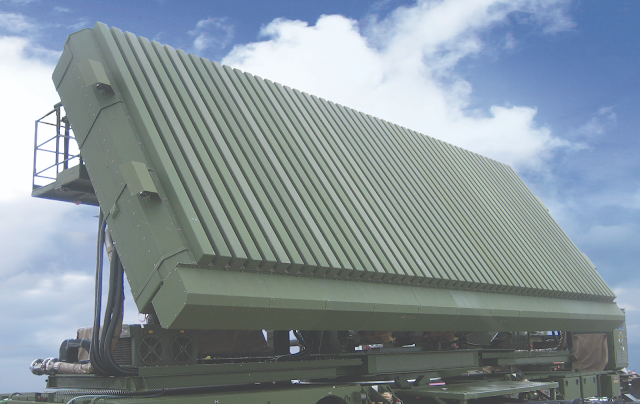Swordfish is an advanced L-band active phased array radar developed by the Defence Research and Development Organization (DRDO). Unlike the most radars used by Indian forces, the Swordfish is capable of successfully detect, track and stop inbound ballistic missile threats. The radar was specifically built with Israeli assistance to meet the demands of a fledgling Indian Ballistic Missle Defence (BMD) system. The main reason for the high altitude requirement was to ensure that the inbound threat could be eliminated in outer space by exoatmospheric interceptors.
 |
| EL/M-2080 Green Pine radar (Image: IAI Elta) |
 |
| Swordfish radar at a missile testing facility |
Swordfish has proven itself in over 10 successful missile interceptions including two* exo-atmospheric hit-to-kill (H2K) interception. The existing variant of radar has a range of 600-800 km and can detect targets as small as cricket ball at a long distance. The maximum target speeds up to which it can be tracked by Swordfish is over Mach 12.
In the fully automated, multi-layer mode, a single battery of BMD system could engage 6 high-speed ballistic targets with up to 98% kill probability (when 2 exo-interceptors are launched simultaneously and 2 endo-atmospheric interceptors are in standby mode). All Pakistani ballistic are well within the engagement envelope of the BMD system. But something has changed- Ababeel MIRV-capable missile.
Pakistan first announced its test of the MIRVed missile on 24th January 2017. However, during the test firing of the missile, it was not carrying any MIRVs
and it would be years before the missile is operational.
Ababeel has a range of 2000 km and it can carry at least 3 MIRVs. While the missile is still well within the engagement envelope of Indian BMD, smaller warheads are likely to be troublesome.
Why?
 |
| RCS profile of a cone-shaped reentry vehicle |
 |
| U.S. Air Force maintenance personnel training to remove and install the Avco MK-21 re-entry vehicles from the bus of a Peacekeeper missile. Image: Wikimedia Commons |
MIRV warheads are very small, and the shape itself makes RVs inherently low observable from all direction. Frontal RCS can be smaller than that of a golf ball. Low RCS can drastically reduce the probability of detection and thereby delay the launch sequence - the result is reduced kill probability.
Super-Swordfish cometh
Super-Swordfish radar was first unveiled in 2012, it was stated to be twice as powerful as older swordfish radar. The new radar has a range of over 1500km, facilitating early detection of inbound threats. if reports are to be believed, Super-Swordfish is already operational.
The interesting fact is that the development of Super-Swordfish probably started after Pakistan started working on a MIRVed missile. According to National Interest, '
The BBC reported back in 2010 that Pakistani missile designers were receiving substantial assistance from China in developing MIRV technology. The Ababeel appears to have a large nose cone, which may allow it to carry multiple warheads even if they are slightly larger than normal MIRVed warheads.'
Even though Pakistan tested Ababeel in 2017, India had already begun consolidating missile defence. Older RF guidance based Prithvi Interceptor missile has been replaced by much improved Prithvi Defence Vehicle (similar to THAAD). The new interceptors can intercept RVs at altitudes above 150 km. Since PDV is guided by an IIR seeker it can easily detect RV at a long distance thanks to a high-temperature differential between RV and cold space. On paper, PDV is superior to S-400's 40N6 missile, owing to its superior guidance and hit-to-kill target engagement mechanism.
Can Ababeel be intercepted?
The reentry speed of Ababeel's RVs is well within the interception envelope of PDV and AAD. Any High-Value Asset (HVA) is likely to be protected by multiple BMD missile batteries. Given the weak economic state of Pakistan, there won't be overwhelming numbers of this type of expansive missiles and Indian BMD will be continuously updated to counter new threats.
 |
| AD-1/AD-2 interceptors for a midcourse interception |
A possible new addition to BMD early warning system
“A single early-warning satellite, giving you constant, complete coverage of the country, is unique,” according to Dr V.Jayaraman, former Director at ISRO’s Hyderabad-based National Remote Sensing Centre.
*
In the first exoatmospheric flight PDV didn't have any target.






It is urgently required as China & Pakistan are troublesome anytime.
ReplyDelete